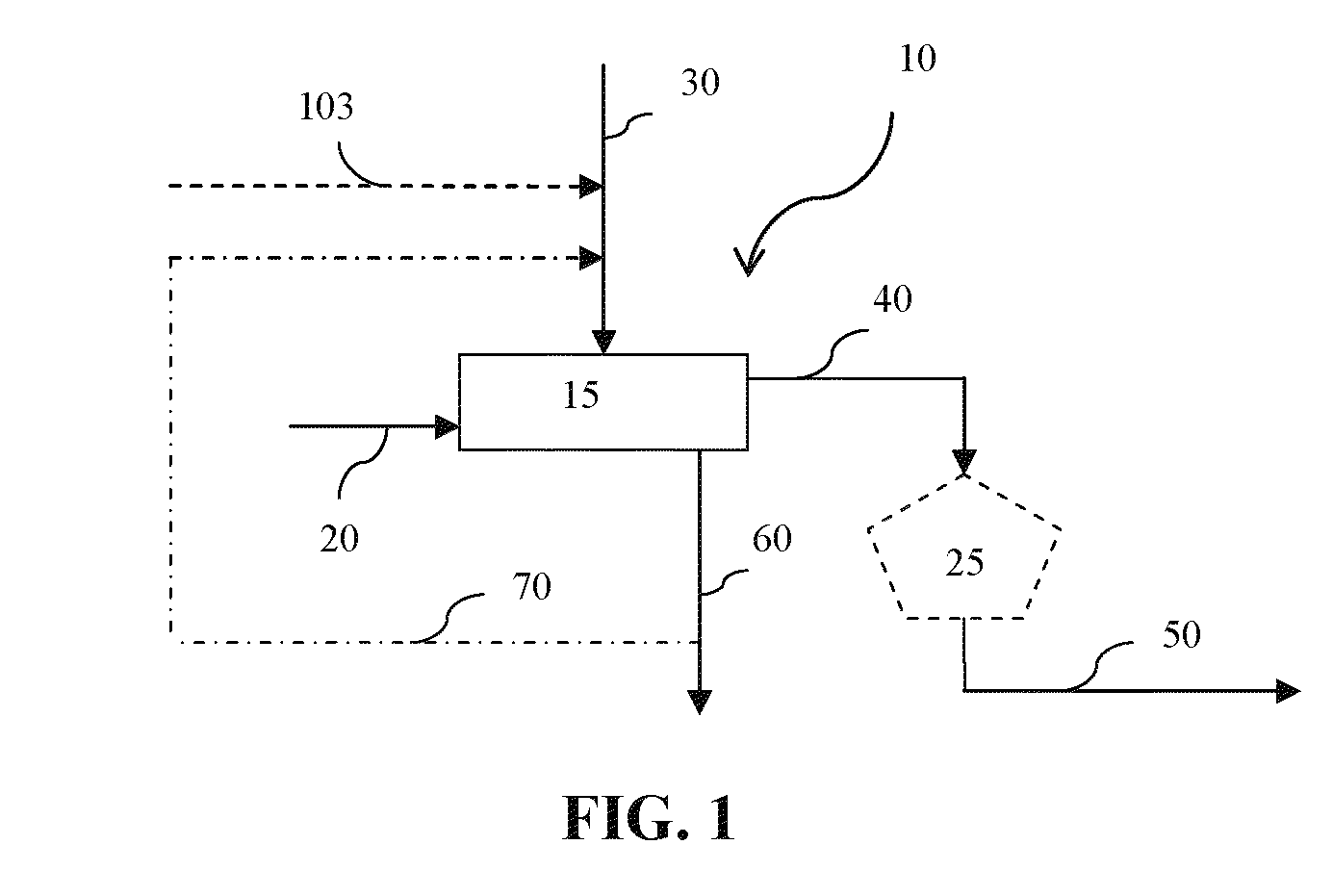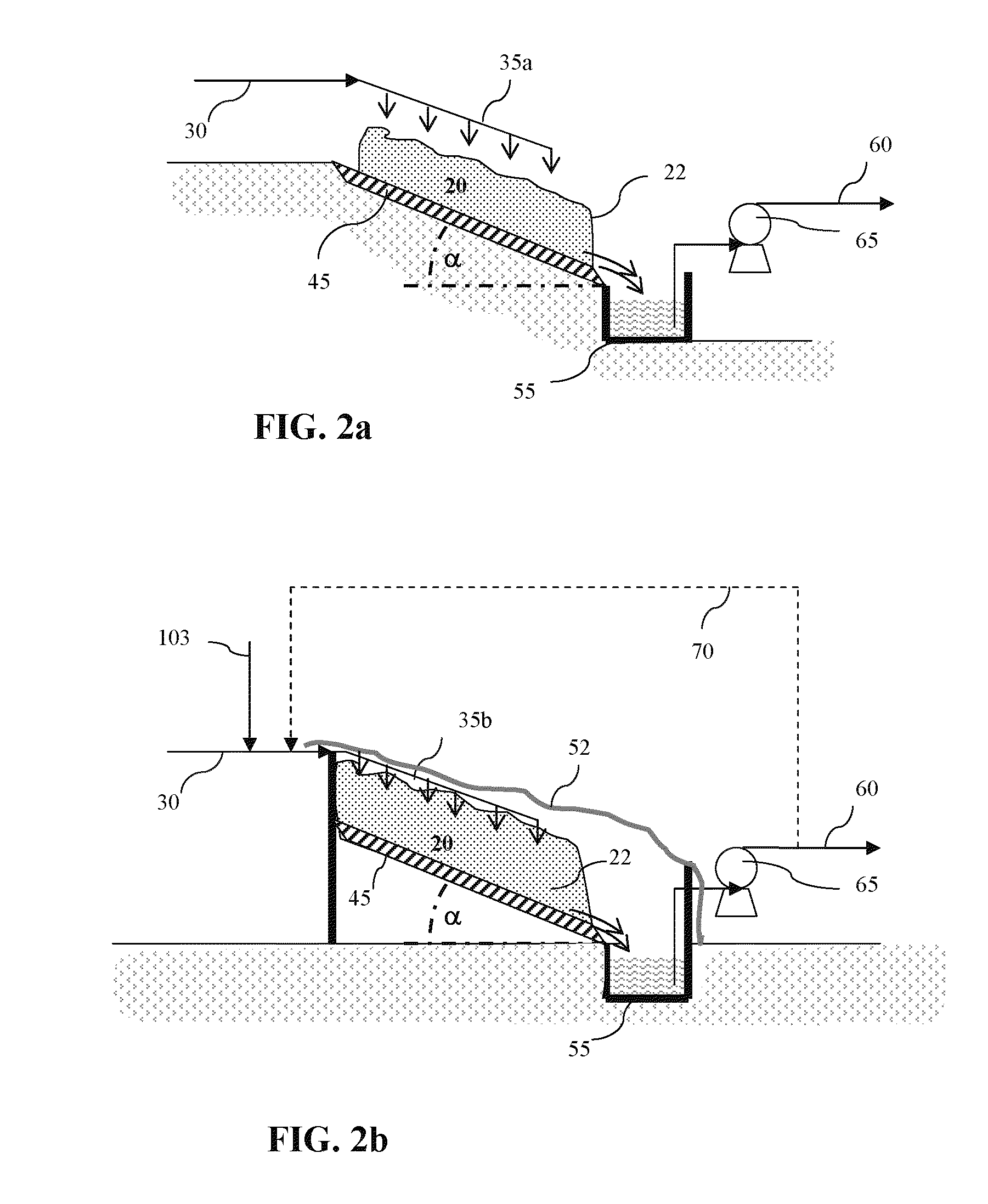Impurities removal from waste solids in the production of soda ash, sodium bicarbonate and/or other derivatives
a technology of waste solids and soda ash, which is applied in the preparation of alkali metal sulfite, separation processes, alkali metal carbonates, etc., can solve problems such as process operation difficulties and product quality, and achieve the effect of reducing the content of impurities in the solids
- Summary
- Abstract
- Description
- Claims
- Application Information
AI Technical Summary
Benefits of technology
Problems solved by technology
Method used
Image
Examples
examples 1-6
Leaching Step
Example 1
[0343]A leaching test was performed on a solid sample which was recovered from a pond deposit in a mother liquor pond which received an overflow from a crystallization pond. The recovered sample had a high content in sodium chloride and sulfate. The composition of the pond deposit is listed in TABLE 2 below.
[0344]Total organic carbon (T.O.C) was measured in a Tekmar-Dohrmann Phoenix 8000 TOC Analyzer by infrared detection after oxidation to carbon dioxide by sodium persulfate enhanced by ultraviolet light. The sodium sulfate content was measured by the following method. Sulfate ion was precipitated in an acetic acid (HC2H3O2) buffer medium (pH=4) with barium chloride (BaCl2) to form barium sulfate (BaSO4) crystals of uniform size. Turbidity of the BaSO4 suspension was measured and the sulfate ion concentration was determined by comparison of the reading with a standard curve. Chloride was determined potentiometrically using a specific chloride electrode and a s...
example 2
[0351]A similar leaching test was run following the same procedure as in Example 1, except that a different pond solid from a mother liquor pond was used and longwall water was used as the leach solution. The pond solid was recovered from the pond using a trackhoe and was stored on the bank of the pond for 3 months before a sample was taken for testing. The analysis of the weathered solid compared to the initially recovered solid is shown in TABLE 6.
[0352]About 5,697 g of the weathered pond solid sample was placed in the small bucket and leached at room temperature with about 4,315 g of longwall water. The peristaltic pump which pumped the longwall water from the large bucket onto the small bucket lid was set to maintain a constant liquid level in the lid of the small bucket. The test was run for two days, but the pump was shut off during night-time. The longwall water and the pond solid sample were weighed at the end of the test. The final solid weight was about 3,590 g. The final ...
example 3
[0359]Another leaching test was performed on a sample of a ‘deca’ solid which was recovered from a crystallization tailings pond. A purge liquor was used as a leach solution and was passed through a large graduated cylinder filled with the crude deca pond solid. The bottom of the column had a 40-mesh (0.425-mm) screen, and no vacuum was needed to get the liquor to flow through. The solid was analyzed before and after running the liquor through it. Some of the starting solid was air dried overnight along with the final crystals from the column to analyze its composition.
[0360]Three liquor samples were taken throughout the test. The starting purge liquor, various liquor samples, the starting solid sample, and the leached residue were analyzed for sodium carbonate, sodium bicarbonate, sodium chloride, sodium sulfate, and for various inorganic compounds by ICP. The compositions of the liquor are listed in TABLE 7, and the initial and final compositions of the solid are shown in TABLE 8 ...
PUM
| Property | Measurement | Unit |
|---|---|---|
| surface area | aaaaa | aaaaa |
| surface area | aaaaa | aaaaa |
| solid depth | aaaaa | aaaaa |
Abstract
Description
Claims
Application Information
 Login to View More
Login to View More - R&D
- Intellectual Property
- Life Sciences
- Materials
- Tech Scout
- Unparalleled Data Quality
- Higher Quality Content
- 60% Fewer Hallucinations
Browse by: Latest US Patents, China's latest patents, Technical Efficacy Thesaurus, Application Domain, Technology Topic, Popular Technical Reports.
© 2025 PatSnap. All rights reserved.Legal|Privacy policy|Modern Slavery Act Transparency Statement|Sitemap|About US| Contact US: help@patsnap.com



